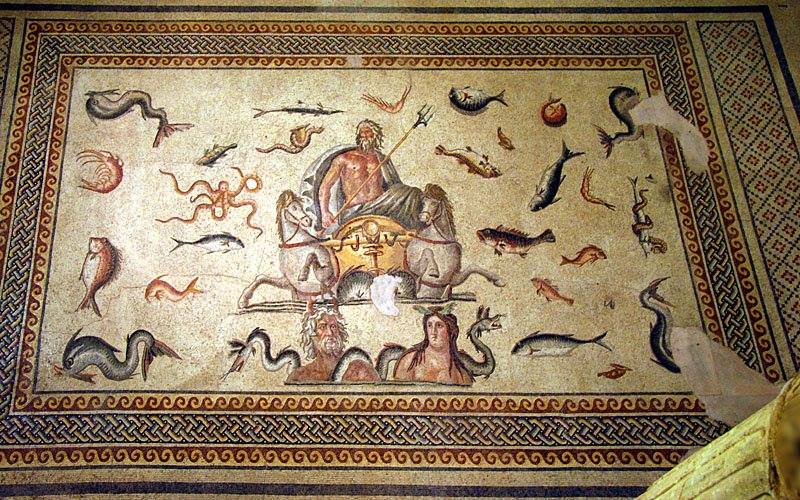

The Perseids were followed by the Atreids. Click for a powerpoint look at Mycenae and the curse of the House of Atreus.
Much of the Mycenaean religion survived into classical Greece in their pantheon of Greek deities, but it is not known to what extent Greek religious belief is Mycenean, nor how much is a product of the Greek Dark Ages or later.
There are several reasonable guesses that can be made, however. Mycenean religion was almost certainly polytheistic, and the Myceneans were actively syncretistic, adding foreign deities to their pantheon of deities with considerable ease. The Myceneans probably entered Greece with a pantheon of deities headed by some ruling sky-deity which linguists speculate might have been called *Dyeus in early Indo-European. In Greek, this deity would become Zeus (pronounced zdeus in ancient Greek). Among theHindus, this sky-deity becomes "Dyaus Pita". In Latin he becomes "deus pater" or Jupiter; we still encounter this word in the etymologies of the words "deity" and "divine."
At some point in their cultural history, the Myceneans adopted the Minoan goddesses and associated these goddesses with their sky-god. These goddesses, however, are Minoan in origin. In general, later Greek religion distinguishes between two types of deities: the Olympian, or sky, deities (including Zeus), which are now commonly known in some form or another; and, the chthonic deities, or deities of the earth, which are almost all female. The latter were believed by the Greeks to predate the former.



More representations of Perseus and Andromeda here.

No comments:
Post a Comment